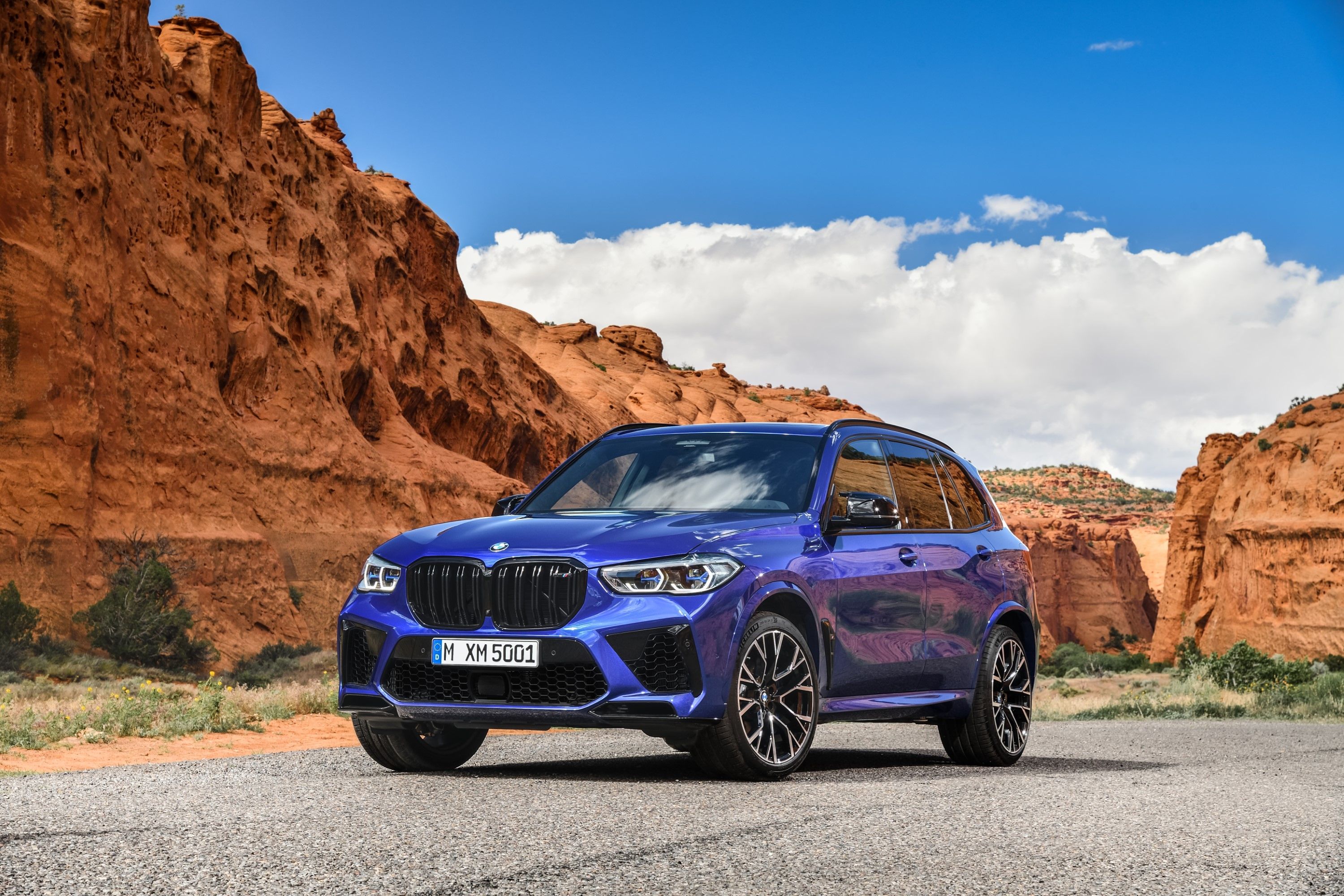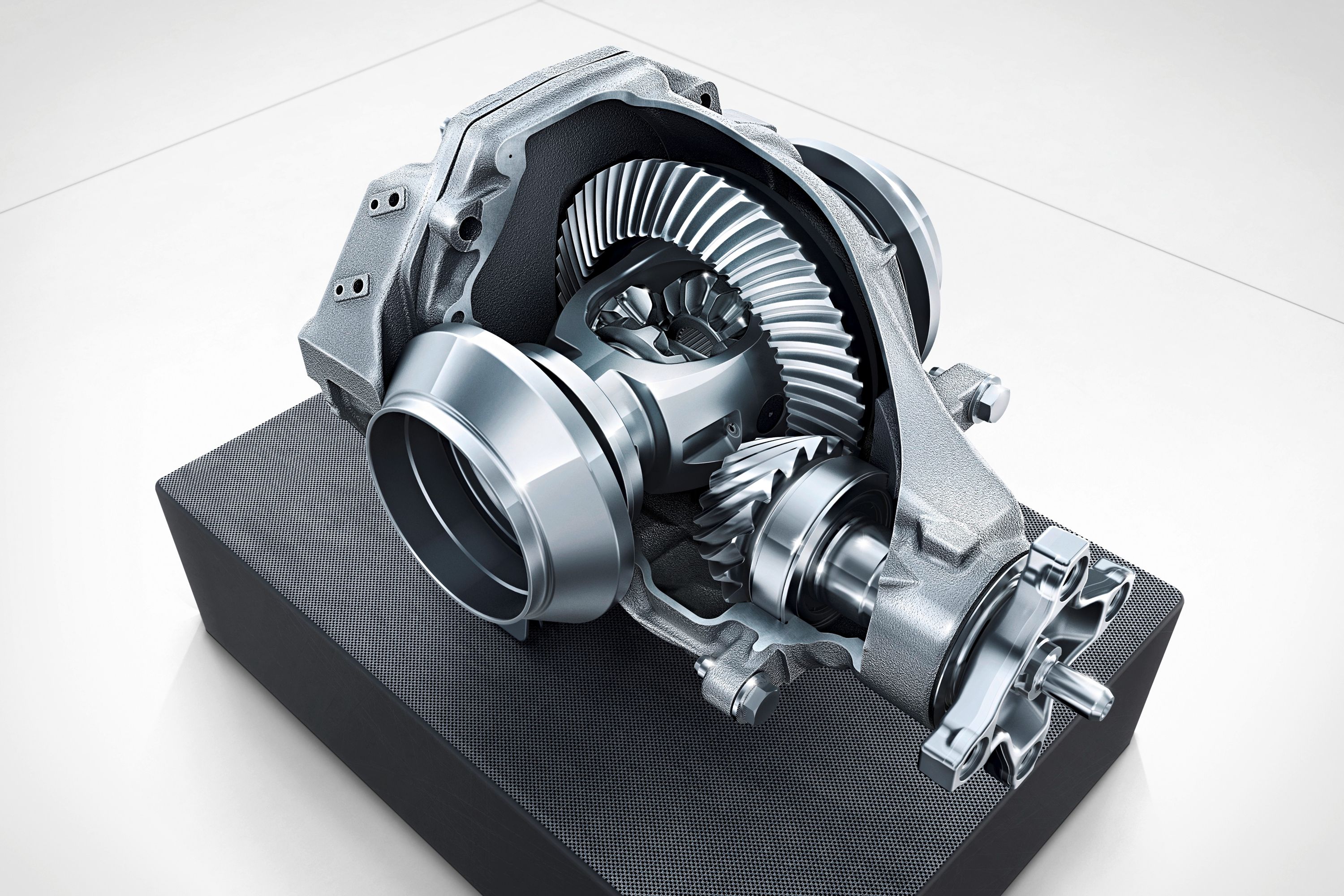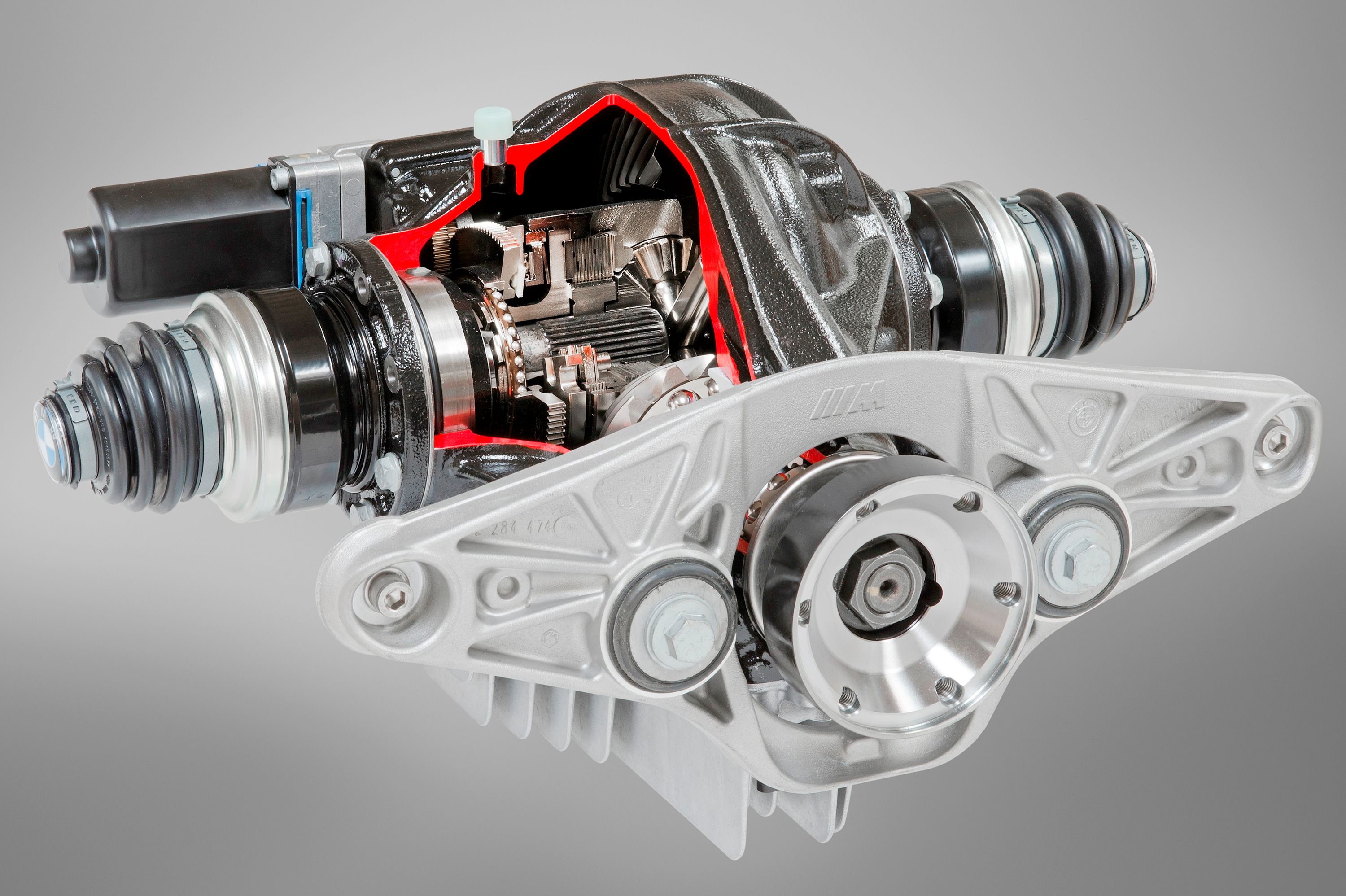
Before we get into it, let's start with the basics of the car differential; whether it be gas, diesel, hybrid, or electric. A car's power source delivers a certain amount of power to the wheels via a driveshaft, or a front differential transaxle in the case of a front-wheel-drive car. The power produced by this driveshaft needs to be split to drive the two wheels. That's why differentials exist: to split the power between the wheels while allowing them to travel at different speeds
Defining the Differential
So, what is a differential? A differential is a crucial component in the front or rear axle assembly, and it allows you to turn without drivetrain windup. The engine sends power via the transmission to a driveshaft that is connected to the rear differential, where the power is split via a set of gears. These gears can increase or decrease the revolutions per minute of each wheel.
Why? Think of a car doing a basic U-turn to the left and what the front and rear wheels are doing while this is happening. The left wheels, or in this case, the inside wheels, have a much shorter distance to travel than the outer right wheels. A differential's gearing allows this to happen. It will enable the inner tire to travel at less rpm while the outer tire is spinning at a higher rpm.
What is a Differential Gear?
There isn't just one gear in a car differential or diff, but a few different parts. The differential in a car consists of:
- Flange
- Pinion gear
- Drive gear
- Bevel pinion gears
- Half shafts
- Spider gears
- Differential oil
How a Differential Works
Here is a summary of how a differential works: The flange is essentially the coupling between the driveshaft coming from the engine and the differential. It connects to the pinion gear, which turns the drive gear. This is connected to three spider gears, which connect to two more side gears, which connect to the half shafts. These are the basic components of an open differential, which is the most commonly used in cars. When a vehicle is moving in a straight line, only the drive gear and half shafts are moving. As soon as the car turns, the spider gears take over and allow the half shafts to move at different speeds.
Types of Differentials, including the Limited Slip, Front, and Locked Differential
For decades, there were three types of differentials, namely, the open, limited-slip, and locked differential. With advancements in drivetrain technology, a few additional examples have been added to the list. In some electric vehicles, the electric motor is housed within the wheel, completely removing the need for a traditional car differential. Here's a list of the most common differentials in production today.
- Open differential: In an open diff, you'll find two half shafts with a gear at each end. These gears are powered by the main ring gear, connected to the drive shaft via a pinion gear. There is another smaller spider gear between the two half shaft gears, which is static when the car is moving in a straight line but engages once it turns. The upside of this differential is that it's cheap to produce and perfectly good for most applications. On the downside, power normally follows the path of least resistance. So in low grip situations, one of the wheels will eventually spin meaninglessly. Under hard acceleration, some FWD performance cars with an open differential will experience torque steer. Any basic vehicle will have a setup like this. The BMW 3 Series is a good example.
- Locked differential: A locking differential is essentially the same as an open differential, but it can lock the wheels in place. Effectively, this creates a fixed axle, with both wheels rotating at the same speed. For the most part, this applies to off-roaders. As you can imagine, having one wheel spinning freely is of no use when trying to get up a rocky incline. With both wheels rotating at the same speed, an SUV (or even trucks, for that matter) has more traction. In hardcore off-roaders, you also get front differential lockers for the ultimate in off-road grip. A Jeep Wrangler Rubicon is equipped with lockers both front and rear.
- Welded differential: This is a permanently locked differential, creating a fixed rear axle. It has a very specific application, which is going sideways. Welded differentials are pretty much standard at drifting events. If you like going sideways, you might be tempted to do the same, but we do not recommend it. A welded diff generates a lot of heat, and at some point, it will explode, most likely taking a few other vital components with it. It's also extremely cumbersome at low speeds since it causes tires to scrape when turning.
-
Limited-slip differential: A limited-slip differential (LSD) offers the best of both worlds but usually is only found in rear-wheel drive (RWD) performance cars. An LSD will allow the two wheels to spin independently but limit the speed at which they can spin independently. This improves traction, which is why it's usually found on high-performance sports car models or serious four-wheel-drive (4WD) machines. There are two kinds of LSD: a mechanical clutch and a viscous LSD. The mechanical clutch LSD comes with pressure rings that apply force on clutch plates alongside the gears. This then locks the differential. The previous-generation BMW M3 or current M2 are prime examples.
The clutches can also be electronically controlled, which is how most all-wheel-drive cars function. Most all-wheel-drive (AWD) vehicles are front-wheel drive, but a center differential can be electronically activated to engage the rear wheels. A viscous LSD uses a much simpler setup. A thick viscous fluid is used instead of the clutch plates mentioned above. When this liquid is subject to force, it becomes more rigid, forcing the differential to lock. It can eventually lose its viscosity, leading to problems. Regular servicing should keep it in good shape, however. - Torsen differential: A Torsen differential is once again the same setup as an open differential, but with additional "worm gears" surrounding the bevel gears. A Torsen differential is open most of the time and transfers torque equally between the front and rear axle. When a wheel on a particular axle starts rotating faster than the opposite wheel, the pinion gears and worm gears bind together in a way that sends power to the slower spinning wheel. The Torsen differential allows multiple worm gear designs, which means manufacturers can tune them to their specifications.
- Active differentials: This differential is similar to a limited-slip differential, but instead of using mechanical components to control the clutches, they're electronically controlled. There are multiple benefits to this system, though it is costly. When equipped with various sensors, the vehicle's ECU can make millions of calculations per second about what wheel requires power. The best example of this is BMW M's active differential, currently used in the AWD M5.
- Torque vectoring: This is a step up from the traditional limited-slip diff. Instead of using clutches to lock the differential when the speed difference is too big, a torque vectoring system can reduce power on one side and increase torque. This allows for a sharper turn-in, which is why you'll usually find it in high-end performance cars. Torque vectoring, like rear-wheel-steering, can help a bigger car feel much more agile. That's why it's used chiefly on performance SUVs like the Alfa Romeo Stelvio Q and BMW X5 M. The effect of torque vectoring can also be created using the brakes, but it's not as effective.
Car Diff Maintenance
On a front-wheel-drive car, the differential is integrated into the gearbox housing and uses the same lubrication fluid. In rear-wheel-drive cars, the differential is obviously at the back and is therefore often overlooked when a car goes in for a service. It depends entirely on how you use your car, but the average mileage for fluid replacement is between 30,000 to 50,000 miles.


